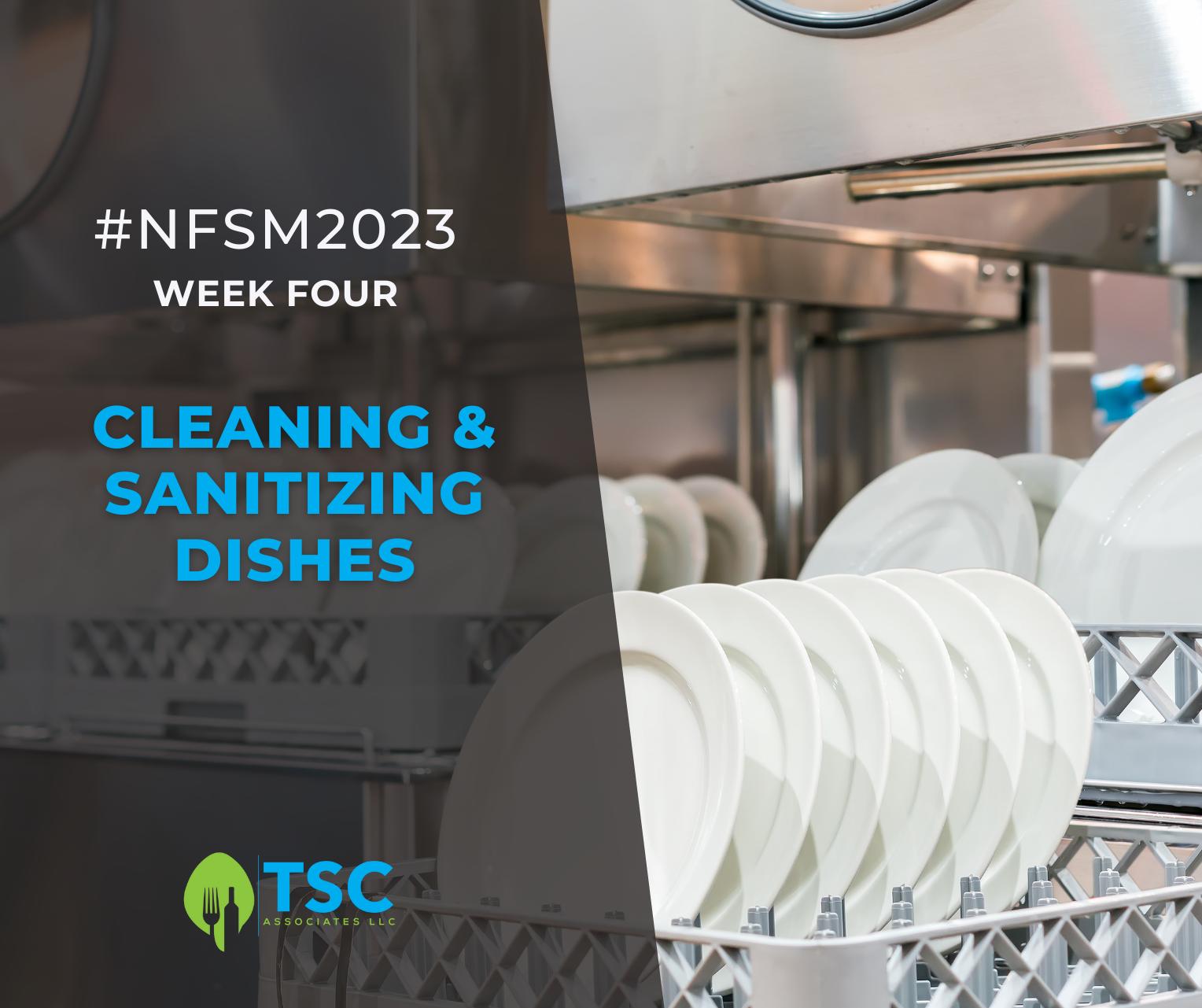From Squeaky Clean to Safety Seen
NFSM Week 4 – Cleaning & Sanitizing Dishes
In the world of restaurants where culinary delights and gastronomic experiences are crafter, one aspect of food safety that is often overlooked but is of paramount importance is the proper cleaning and sanitizing of dishes. To continue our series From Squeaky Clean to Safety Seen, we will dive into the importance and correct procedures of cleaning and sanitizing your tableware to maintain food safety and uphold your establishment’s reputation.
Machine Dishwashing
Keep the Machine Clean
The machine should be cleaned as often as needed but should be checked at least once a day. Ensure that tanks are full of clean water and detergent and sanitizer dispensers are full. Keep spray nozzles clear of any food or foreign objects.
Prep Items for Cleaning
Scrape all items of any food particles, soaking as needed for foods that are dried on the item.
Load Racks
Load the dish racks so that the water spray will reach all surfaces. Be careful to never overload racks.
Air Dry
Never use a towel to dry items as this could lead to contamination. Always allow items to air dry completely before storing them.
Monitor
Regularly monitor water temperature, pressure, and sanitizer levels.
Manual Dishwashing
For larger items that cannot fit into a dishwashing machine, use a three-compartment sink following these steps:
Prepare a Three-Compartment Sink
• Clean and sanitize all sinks and drainboards.
• Fill the first sink with detergent and water that is at least 110°F (43°C). Follow the manufacturer’s recommendations.
• Fill the second sink with clean water. If items will be sprayed instead of dipped, this step is not necessary.
• Fill the third sink with water and sanitizer to the correct concentration. Hot water can be used as an alternative.
• Display a clock with a second hand to allow food handlers to monitor how long items have been in the sanitizing concentration.
Clean & Sanitize Using a Three-Compartment Sink
1. Scrape all items of any food particles, soaking as needed for foods that are dried on the item.
2. In the first sink, use a brush, cloth towel, or nylon scrub pad to loosen particles. Change the water and detergent when the suds or gone and the water appears dirty.
3. In the second sink, spray the items or dip them to rinse away all traces of food and detergent. If dipping the items, the water must be changed when it appears dirty or is full of suds.
4. In the third sink, sanitize items in the solution. Closely monitor the temperature of the water and the sanitizer concentration to ensure requirements are met. Change as needed. Do not rinse items after sanitizing them as this could lead to contamination.
5. Never use a towel to dry items as this could lead to contamination. Always allow items to air dry completely before storing them.
Next week we will be concluding our series with Cleaning & Sanitizing Equipment and Premises. Do you want to learn more? Contact us today to find out about our ServSafe® Food Manager Certification!
Check out our previous posts in the series about Food Safety Management System, how to create a Master Cleaning Plan, and an in-depth look at Cleaning, Sanitizing, Disinfecting.

